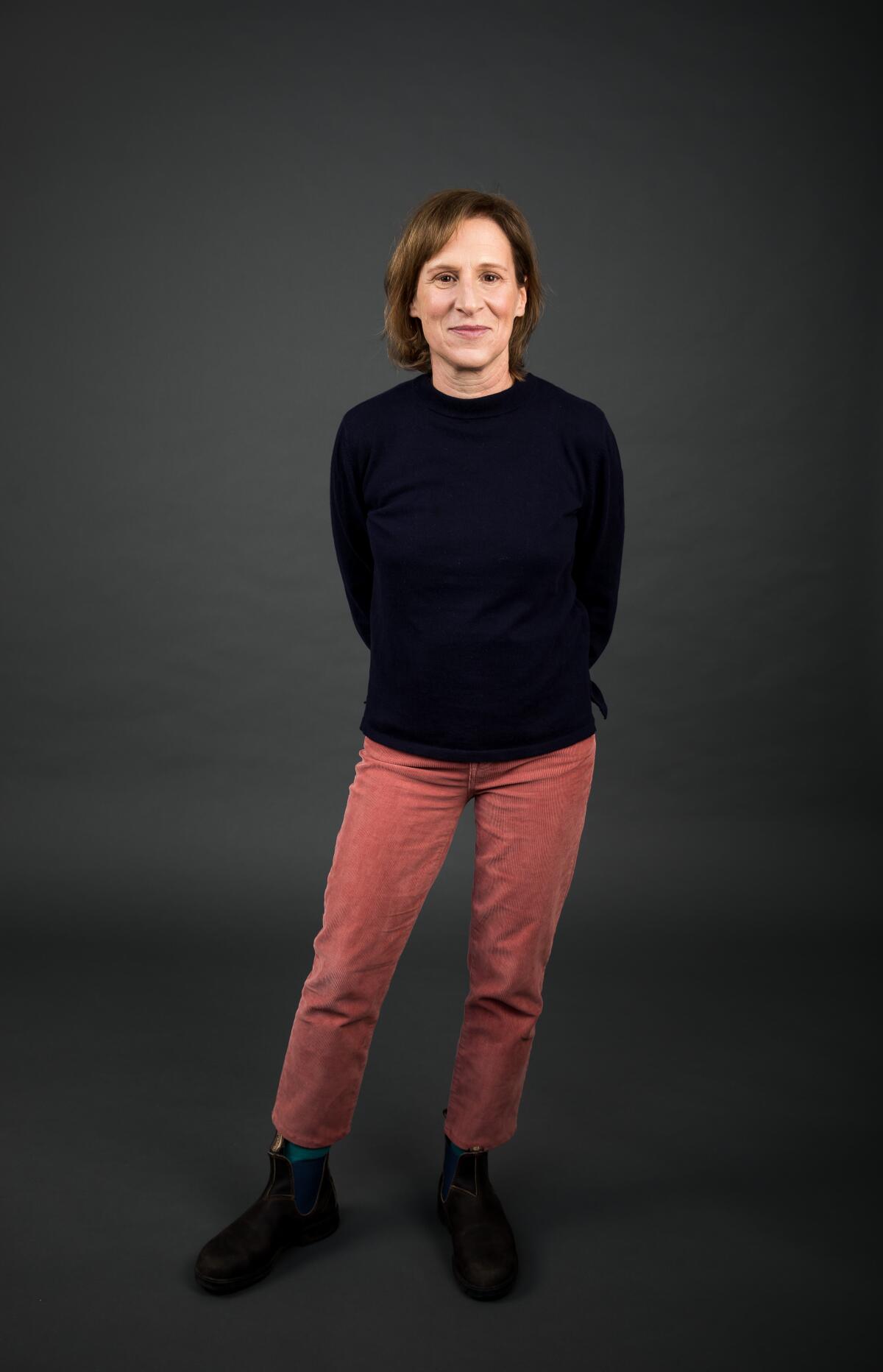Director Kelly Reichardt writes while she scouts — as with ‘First Cow’

- Share via
Indie filmmaker Kelly Reichardt was on tour in Boston, promoting “First Cow,” released just days earlier at the time, when she discovered that due to the COVID-19 outbreak, movie houses were shutting down nationwide. She worried that her compact, quietly told tale of two men — Chinese immigrant King-Lu (Orion Lee) and a baker, Cookie (John Magaro) — who team up to sell fried-dough confections in the 1820s Oregon Territory, wouldn’t play as well at home.
“It’s hard to complain during a pandemic, but it’d be a lie to say it wasn’t a disappointment that it wasn’t in theaters,” says Reichardt. “But it’d be worse if people went to see your movie and got sick.” Viewed on the big screen or on TV, though, the summer release “First Cow,” based on the novel “The Half-Life,” written by Reichardt’s longtime collaborator Jonathan Raymond, generated the most rapturous reviews of her career.
Recently, from her Portland, Ore., home, Reichardt talked about directing animals, why location scouting and scriptwriting go together and the challenge of reaching audiences. “It’s getting harder and harder — and COVID isn’t helping — to make films filled with melancholy and have lots of ambiguity to them,” she says. “The stories that I tell — a guy stealing milk — aren’t exactly stories that make mobs of people rush to theaters.”
In what ways was “First Cow” different from your other films?
It was the biggest budget I’ve ever had. [In the past] I shot for six days, then on the seventh day I did reshoots. “First Cow” was pretty down and dirty, but I shot five-day weeks. I’d never done that before, just go to the location by myself on down days and just be there and think. What a fantastic gift. Usually you just move forward; you can’t think about what you’ve done.
You famously like to location-scout and write at the same time. Why?
I find that [when I’m scouting] you’re meeting people, seeing things. You get information you’re not necessarily even looking for, and it often ends up informing the script.
Example, please.
When I was scouting “Night Moves,” the guy showing me around happened to have nine fingers. It turned out that he blows up trees for developers. In the end, he showed me how to build bombs for the movie. I wasn’t looking for that. But if I hadn’t gone scouting, I wouldn’t know.
How did the frontier boot camp you devised for your male leads work?
They landed in Portland, got in their costumes, and off they went in the rain with a survivalist to learn to build a fire without matches, skin a squirrel and various things they needed to look natural doing. It was also a way for them to spend time together.
So it’s part bonding time, part rehearsal. Is every actor game?
The thing people aren’t always on board with is the lack of showering and not washing their clothes. In [the 2010 Oregon Trail drama] “Meek’s Cutoff,” we needed their clothes to keep getting dirtier. There was finally a revolt from the cast, and they had a day where they were allowed to wash their clothes because they were so stinky. But we pushed it as far as we could. [Laughs]
Wait. No showering?
Ask [“Meek’s” star] Michelle Williams. [Laughs] We negotiated. The idea was that she could shower, but she couldn’t wash her hair.
“First Cow” is distinguished by beautiful close-ups and footage of lush wilderness. How did you decide to use the boxy 4:3 aspect ratio?
It just made sense: “First Cow” is a super intimate story, and we were in a forest. It wasn’t like there was the horizon — it was just really tall trees, vertical lines. It’s also an economic frame, meaning that you’re filling a smaller space. Also [when it comes to] close-ups, to me, a square is better than a rectangle.
What’s the secret to directing a cow?
I don’t know if I figured it out. You’re just kind of getting through it. [Laughs] It’s like having a big pet on set. Everyone wants to talk to the cow. But once the camera comes out, we became a quieter, slower-moving, whispering unit. It’s like dog trainers say: “We don’t train the dogs; we train the owners.” We all just tried to not scare the cow.
Do you know why you’re drawn to stories about people who are just scraping by?
A lot of our scripts are based on this question of “What is our responsibility to each other?” “What are we meant to be doing with each other?” It all really gets down to a basic idea of “What is America?” How do people survive? How are they able to find joy in life and raise kids under tough circumstances? How are they constantly creative about day-to-day living? Besides, what’s interesting about a story about a person with a secure 401k?
More to Read
Sign up for The Envelope
Get exclusive awards season news, in-depth interviews and columnist Glenn Whipp’s must-read analysis straight to your inbox.
You may occasionally receive promotional content from the Los Angeles Times.









